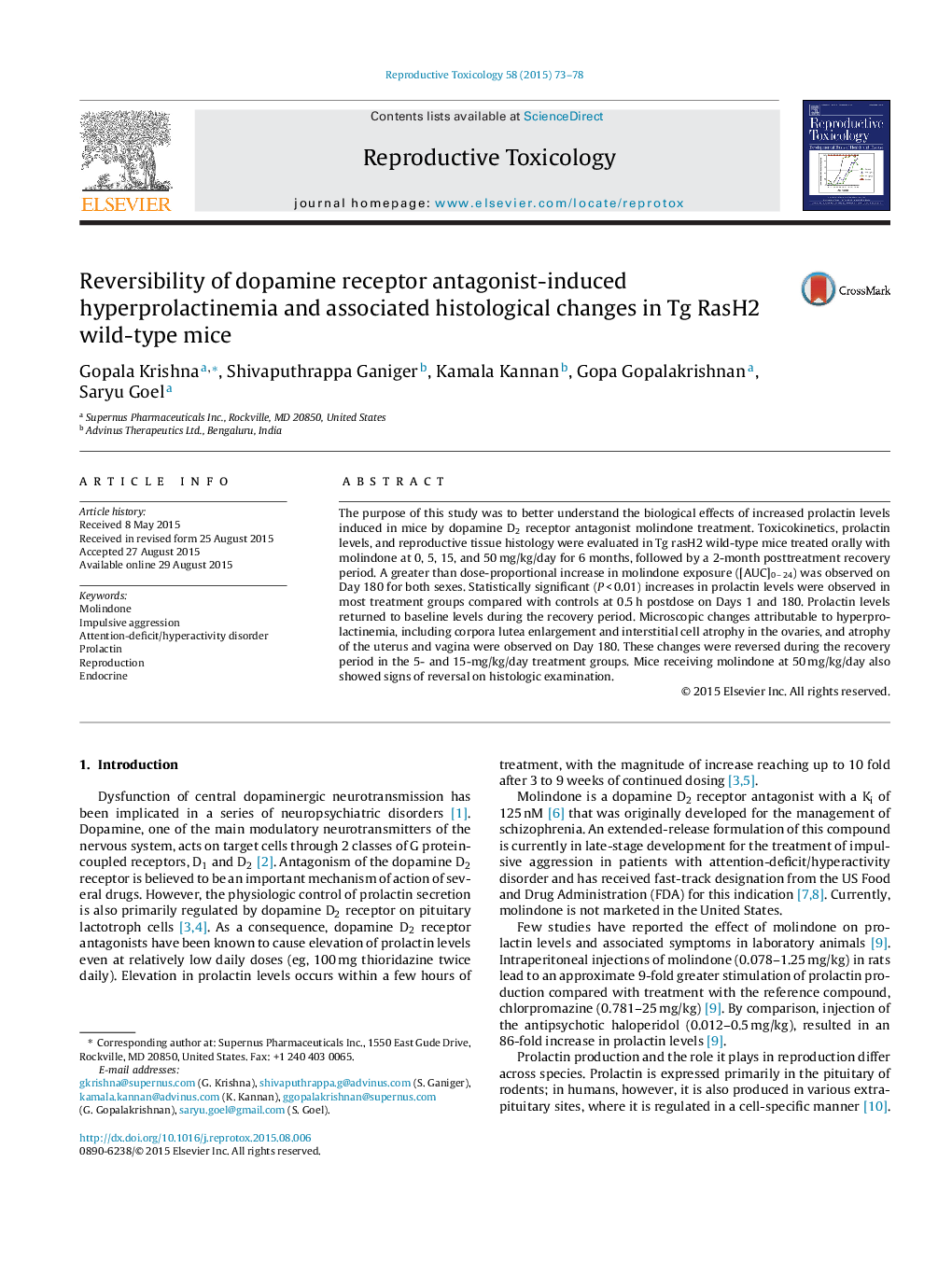| Article ID | Journal | Published Year | Pages | File Type |
|---|---|---|---|---|
| 5858047 | Reproductive Toxicology | 2015 | 6 Pages |
Abstract
The purpose of this study was to better understand the biological effects of increased prolactin levels induced in mice by dopamine D2 receptor antagonist molindone treatment. Toxicokinetics, prolactin levels, and reproductive tissue histology were evaluated in Tg rasH2 wild-type mice treated orally with molindone at 0, 5, 15, and 50 mg/kg/day for 6 months, followed by a 2-month posttreatment recovery period. A greater than dose-proportional increase in molindone exposure ([AUC]0 â 24) was observed on Day 180 for both sexes. Statistically significant (P < 0.01) increases in prolactin levels were observed in most treatment groups compared with controls at 0.5 h postdose on Days 1 and 180. Prolactin levels returned to baseline levels during the recovery period. Microscopic changes attributable to hyperprolactinemia, including corpora lutea enlargement and interstitial cell atrophy in the ovaries, and atrophy of the uterus and vagina were observed on Day 180. These changes were reversed during the recovery period in the 5- and 15-mg/kg/day treatment groups. Mice receiving molindone at 50 mg/kg/day also showed signs of reversal on histologic examination.
Related Topics
Life Sciences
Environmental Science
Health, Toxicology and Mutagenesis
Authors
Gopala Krishna, Shivaputhrappa Ganiger, Kamala Kannan, Gopa Gopalakrishnan, Saryu Goel,
